Whether they are feral cats, neighborhood cats, or your outdoor cats, the last thing you want is them digging up your precious garden. If you feel like you are losing the battle in keeping cats out of your garden, it is time to look into plants that repel cats.
Although there is no guarantee that these plants will work to keep all cats out of your garden, they are worth a try. When wondering what plants repel cats, there are a few that make it to the top of the list. Cat repelling plants share similar features.
For example, they offer strong scents that may be pleasant to humans, but cats find them repugnant. Although we have included a list of 10 cat repelling plants, the results are not guaranteed. In addition to using these plants, you should try other cat deterrent methods if they are doing a number on your garden.
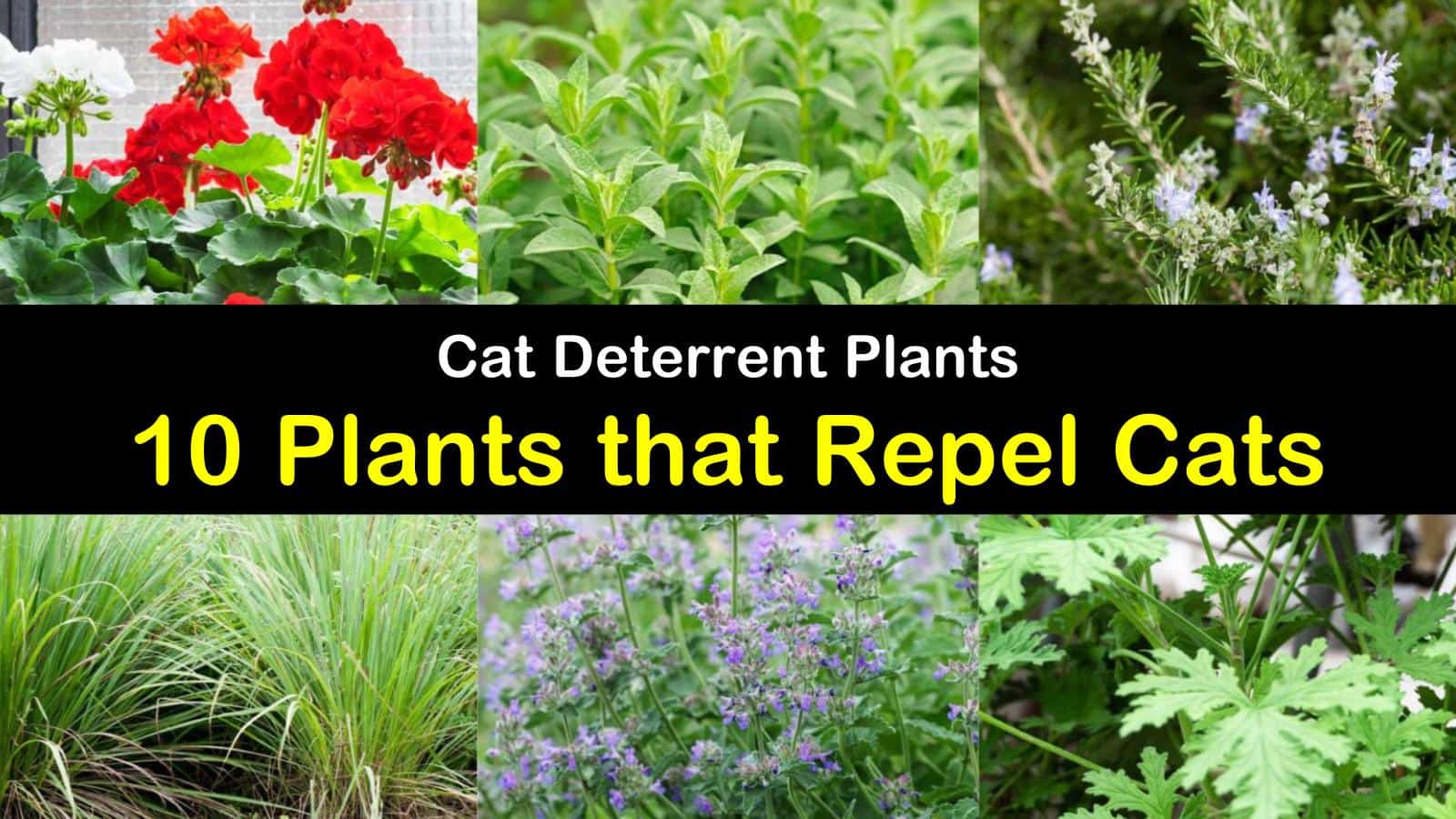
- Home Remedies to Help Repel Cats and Other Critters
- What Plants Repel Cats? One of These 10 Will Work
- Geraniums (Pelargonium)
- Keep Cats Away – Scaredy Cat Plant (Coleus canina)
- Pennyroyal (Mentha pulegium)
- Lavender (Lavandula) – Cat Repellent Plants
- Common Rue (Ruta graveolens)
- Rosemary (Rosmarinus officinalis) – Plants that Keep Cats Away
- Curry Plant (Helichrysum augustfolium)
- Plants that Deter Cats – Citronella (Pelargonium graveolens citrosa)
- Lemongrass (Cymbopogon)
- Catnip (Nepeta cataria)
Home Remedies to Help Repel Cats and Other Critters
If your garden is cat-friendly in addition to pleasing you, there are several things you can do to make it a garden that cats dislike so that they will go elsewhere to explore. In addition to planting plants that deter cats, use several of these methods for keeping cats out of plants and to help stop cats from digging up your yard or using it as their favorite place to poop.
Moving sprinklers are a great way to discourage cats from entering off-limit areas. Most cats do not like water, so by strategically placing motion sensor sprinklers throughout your yard, you can stop them in their tracks and send them running in the other direction. Be sure to alter the locations slightly every few days, so the cats don’t develop a new route to reach your garden.
Mulching the surface of your beds with cat repellent mulch can keep cats out all off-limit areas. Some of the best cat deterrent mulches are citrus peels, which includes grapefruit, lime, lemon, and orange.
Other deterrents you can use are pipe tobacco and coffee grounds. Not only will this help keep cats away, but they will also aid in replenishing nitrogen in your soils.
Plastic forks are a great deterrent; they work to keep squirrels out, as well as cats. To keep these and other critters out of your garden, plant forks in the dirt every few cubic feet. Forks can also serve as a natural bird repellent.
Tines should be facing up towards the sky; it will look like you are growing forks in your dirt. If you don’t want forks sticking up all over the place, another option is to lay chicken wire across the soil to create an uncomfortable walking path for kitties.

Other ways to keep unwanted cats out of your garden include diluting essential oils in a spray bottle with some water and spraying it around the plants. Some oils to try are eucalyptus, lavender, rosemary, lemongrass, and other strong scents.
For getting rid of cats, cayenne pepper or crushed up pine cones sprinkled across the ground make an uncomfortable walking surface for sensitive paws. Despite what you have heard about mothballs deterring properties, it is not recommended as they are toxic to not only cats but children, as well.
What Plants Repel Cats? One of These 10 Will Work
Even if you are a cat lover, you don’t want stray cats wandering in your yard and you certainly need to know what to do for keeping cats from pooping in the garden. Growing cat repellent plants is a natural and effective deterrent. Check out our ten suggestions.
Geraniums (Pelargonium)
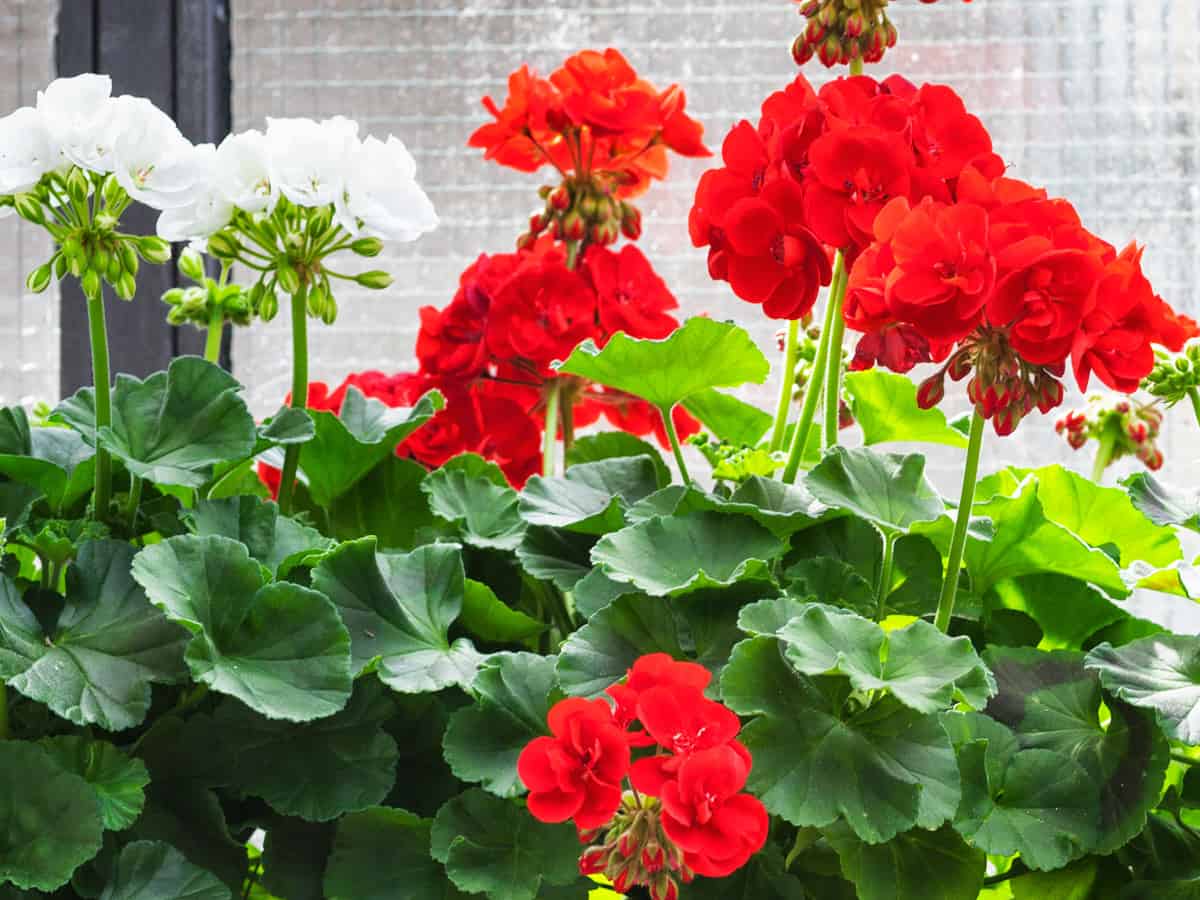
Geraniums are an excellent choice if you are looking for a natural cat repellent that also adds color to your landscape. For humans, these garden plants emit a pleasant odor, but most cats find them unpleasant to their sense of smell. Geraniums are mainly an outdoor plant but are also kept indoors during colder months, and with enough care, they continue to bloom all winter long.
When caring for geraniums, it is important to water in small amounts and only when the leaves begin to droop. Cut off old, dead leaves as new growth appears.
Before watering, allow the soil to dry and cut back watering in the winter, but not enough to allow the roots to dry. Pinch stems to promote a bush-like appearance and deadhead blooms to encourage new ones.
Keep Cats Away – Scaredy Cat Plant (Coleus canina)
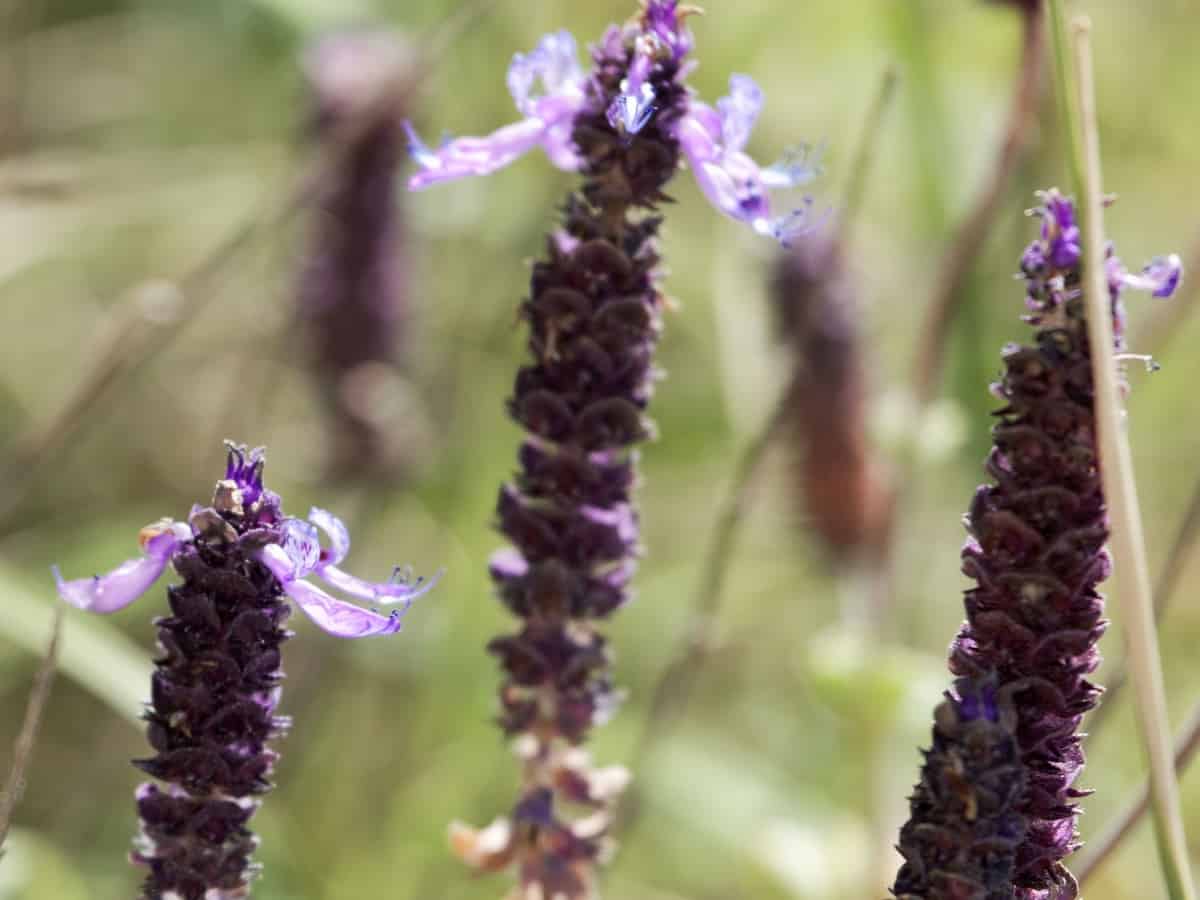
The name of the plant is enough to make you think these are the best plants that repel cats, but it is not the name that does it but the smell. These are plants to keep cats away, but also to keep dogs away, as neither species enjoys the scent. These plants emit an extreme pee like odor, so not all people enjoy them either.
When planting the Scaredy Cat Plant, place them directly in your problem areas either in a ring or a line. Cats will not walk around them to reach the remainder of your garden. These plants are low maintenance; you may be surprised at how easy they are to care for. They do well in dry conditions, so if you have a cat using dry areas of the garden as a litter box, plant one of these in the exact place.
Pennyroyal (Mentha pulegium)
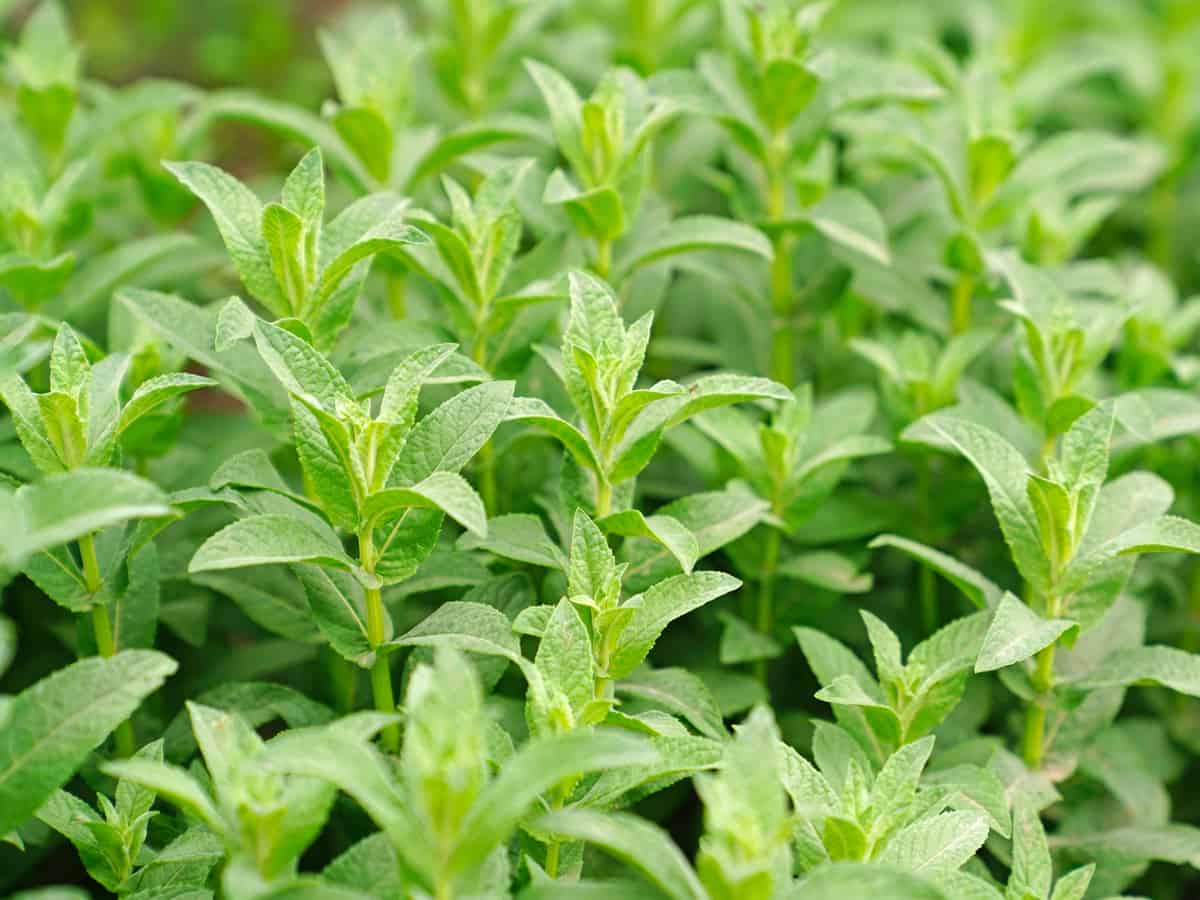
As the smallest member of the mint family, Pennyroyals aren’t just plants that deter cats; they also repel a variety of insects. If you enjoy using the plants that you grow, this herb is an excellent choice as it is stronger and far more potent than other mint herbs in the family.
In extract form, the herb is often used in teas. Do not confuse the American Pennyroyal with the European one. The low growing plant features hairy stem roots that grow up to about a foot tall.
Great as ground cover flowers, Pennyroyal roots wherever it touches the ground. The new Pennyroyal plants work well as a border plant for a cat repellent. The plant enjoys full sun but can tolerate partial shade and does best in zones 5 through 9.
Lavender (Lavandula) – Cat Repellent Plants

While most of love the scent of lavender, it is not a favorite among cats for some reason, so they make an excellent choice as plants that keep cats away. Shrubby lavender plants are not just an excellent deterrent for cats; they are also one of the best plants that repel insects and deer. When used to keep cats out of your garden, it is best to plant them in a line.
One issue you will face with lavender is the numerous options available. While all help keep cats out, the taller varieties are the most effective.
Cats are jumpers, but if the bush blocks their line of sight as the taller lavender plants do, they are not as curious. Planting along borders also aids in chasing cats out, as these bushes release their pleasant scent whenever something brushes against them.
Common Rue (Ruta graveolens)
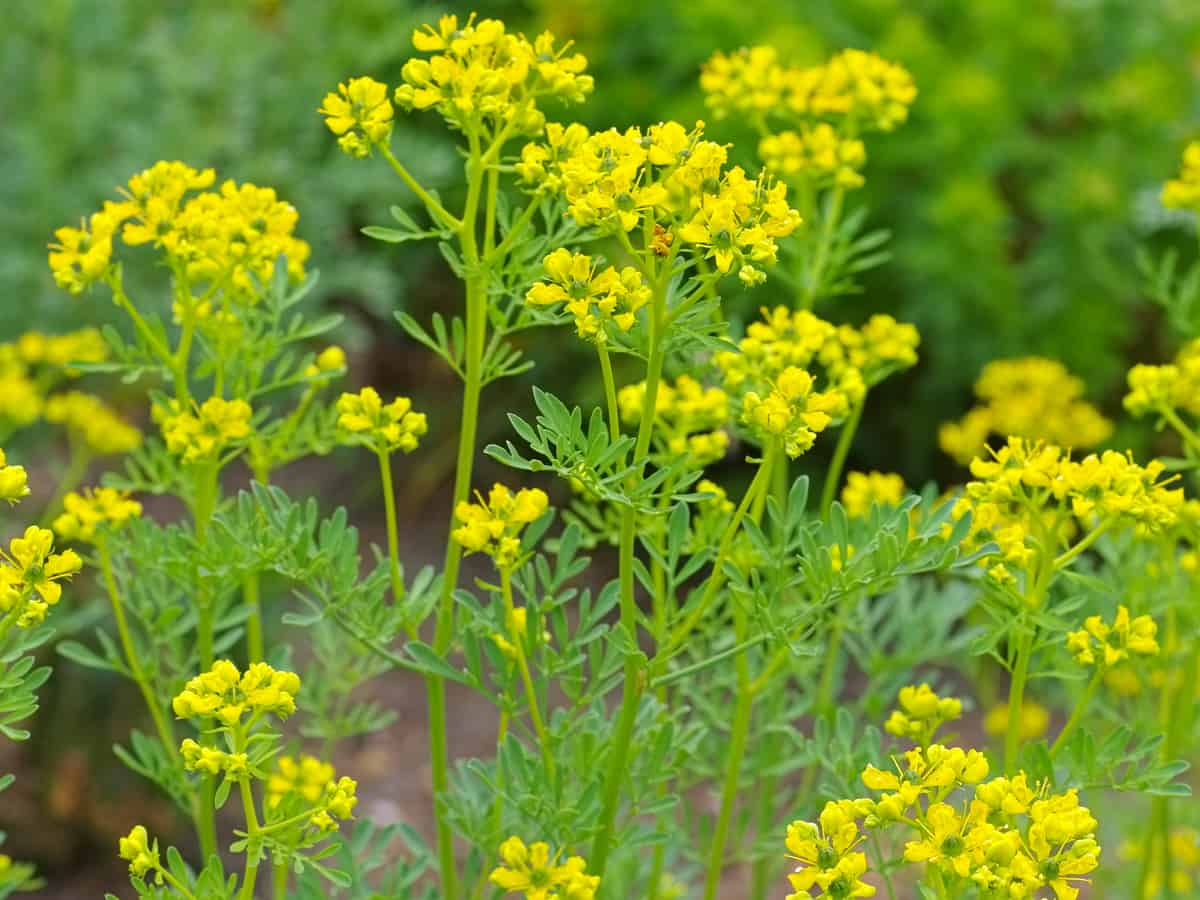
The musty odor emitted by the Common Rue keeps cats at bay, but the leaves also offer a bitter flavor, making it undesirable for cats to nibble. The shrub is poisonous if eaten so use caution when planting in garden beds around children.
The evergreen shrub thrives in well-drained, dry to medium moist soils. The bush loves full sun but tolerates partial shade and poor soil as long as the soil offers excellent drainage.
Rue grows well in zones four through 8, but requires winter mulch and does not tolerate wet soil. When used in garden beds to deter cats, use it in the middle or front rows as it only reaches heights of up to three feet with a similar spread.
Rosemary (Rosmarinus officinalis) – Plants that Keep Cats Away
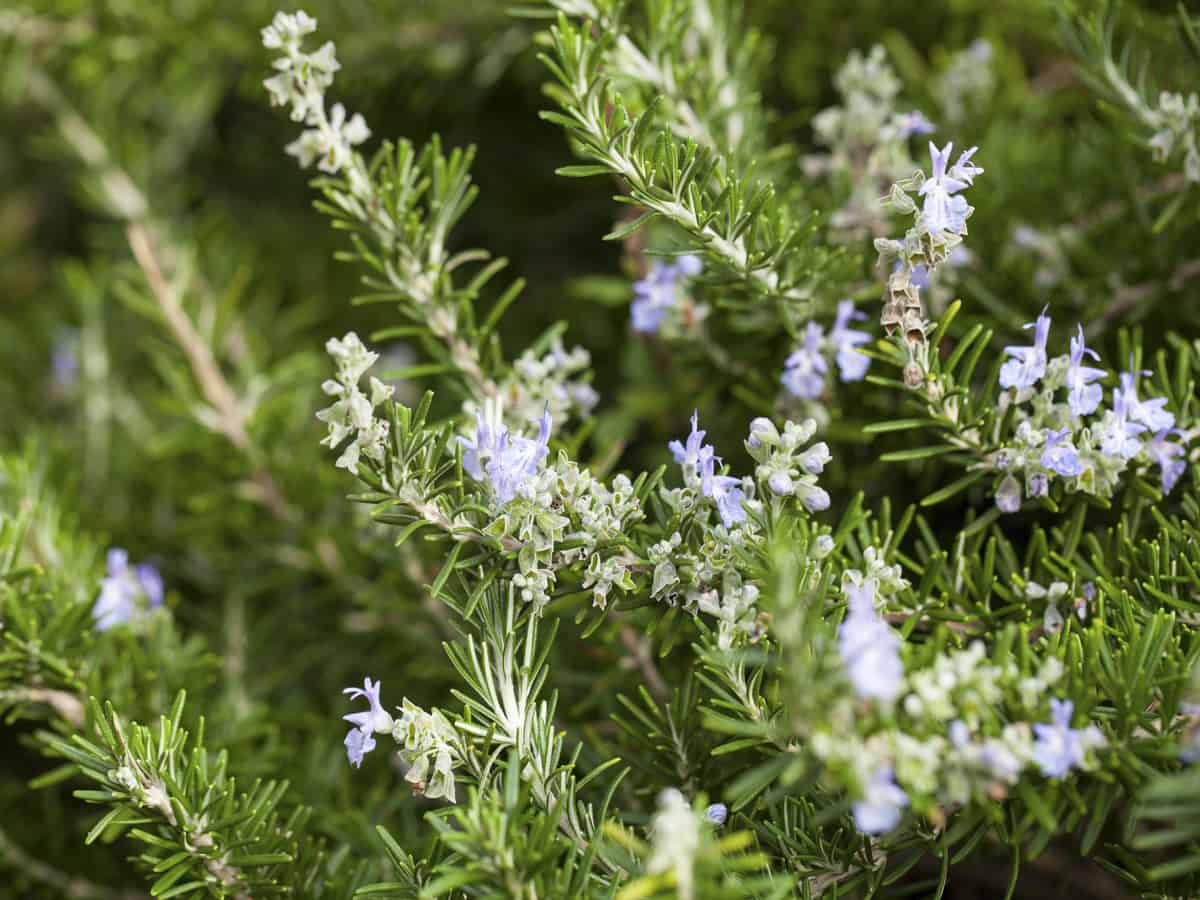
Rosemary is a woody perennial native to the Mediterranean. The perennial not only helps repel cats from your garden but is also extremely useful in cooking. When planting Rosemary, keep in mind that it prefers a dry and relatively warm climate, and it does not do well in soggy soil or cold temperatures.
Use a high-quality compost with a pH of 7 as these plants prefer neutral to alkaline soil. For those living in areas colder than Zone 9 based on the US hardiness map, Rosemary works best when planted in a container as you can move it indoors when the weather changes.
Rosemary may also work as a summer annual rather than a perennial plant. Containers alongside the patio or near flower beds can also help to repel cats, as it is the smell the plant emits that chases them off.
Curry Plant (Helichrysum augustfolium)
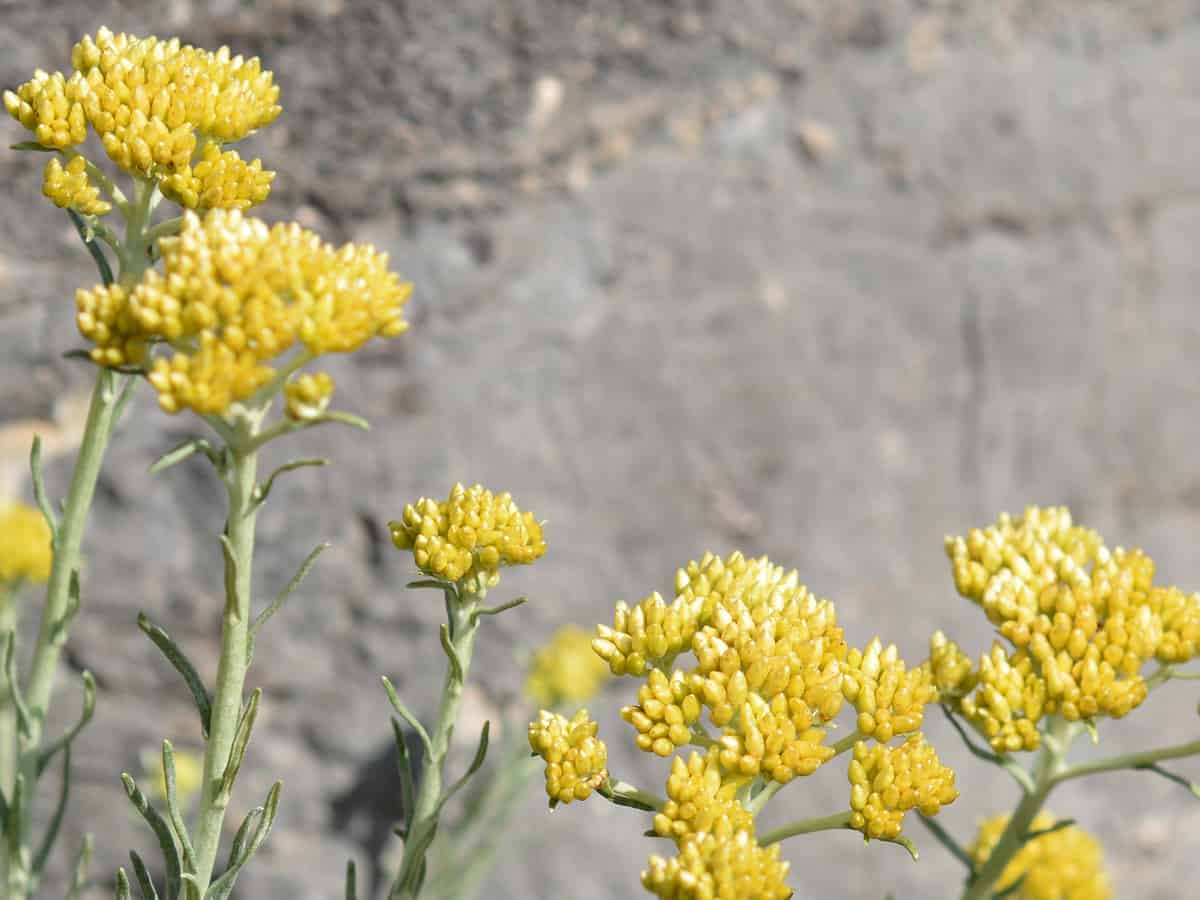
In areas where this plant grows naturally, many view the plant as a nuisance, but these strong-smelling plants are useful cat repellent plants. The shrub requires full sunlight and reaches two feet tall by three feet wide. When planting in gardens, offer the Curry Plant protection from wetness and wind.
Not only does this plant work at repelling cats, but it is also considered a deer deterrent. The Curry Plant is sold as a shrub and features small yellow flowers that do well in USDA hardiness zones 8 through 11. If you ever want to remove the plant, you should know it is often difficult to remove.
Although the plant does smell like curry, it is not an herb and has no use in the kitchen. The plant does well in poor soils and dry conditions.
Plants that Deter Cats – Citronella (Pelargonium graveolens citrosa)
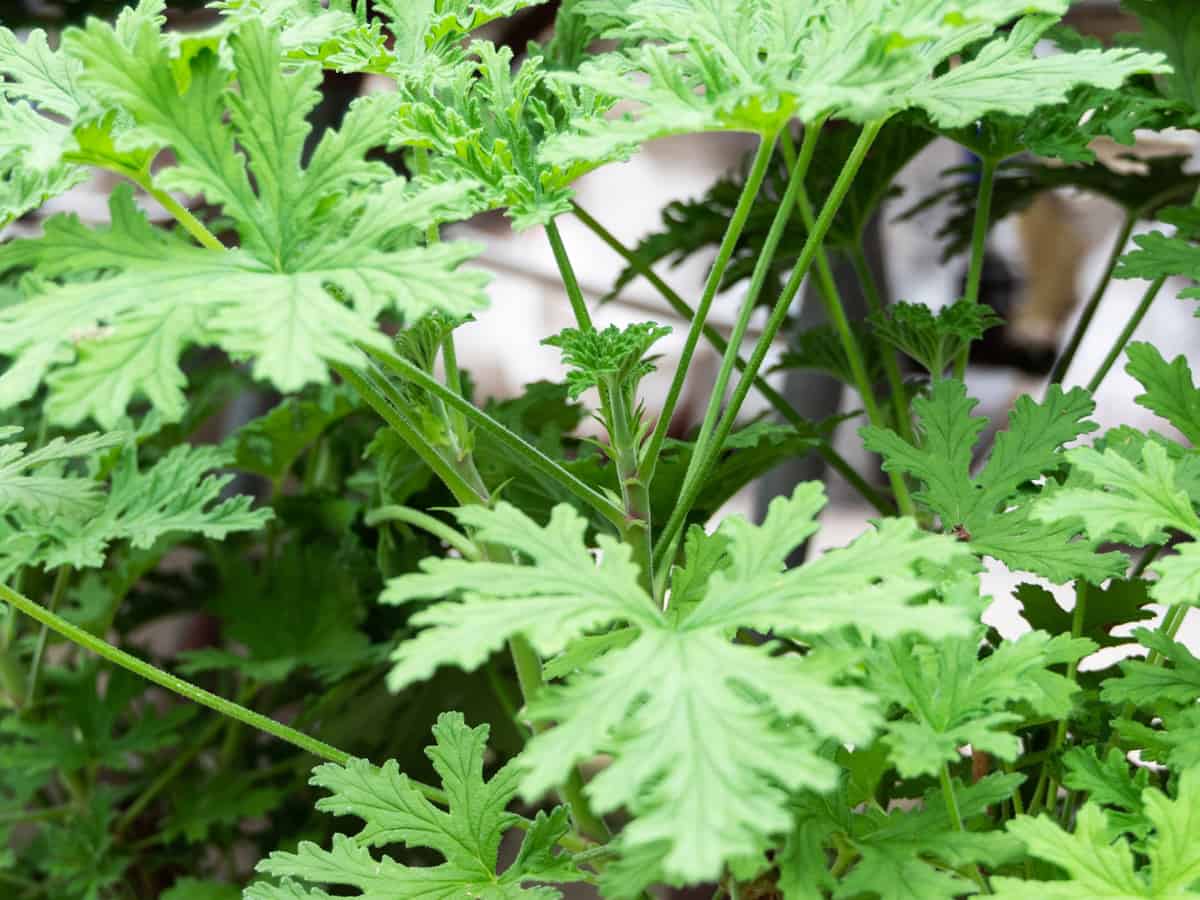
Also referred to as the mosquito plant as it helps keep mosquitoes at bay, Citronella also works to help repel cats. Citronella is a geranium that emits a pleasant citrus-like scent that humans enjoy, but cats, mosquitoes, and other insects do not.
Citronella works in garden beds or containers placed throughout the patio and along walkways where they are brushed up against to release its scent.
Do not over-fertilize these plants, as the excess nitrogen reduces the leaves’ fragrance. Although a perennial, Citronella is a fragile plant and does not do well in cold climates.
Always move indoors before the first frost hits, or treat it as an annual. The plant prefers part shade and requires well-draining, light soil that is kept on the drier side.
Lemongrass (Cymbopogon)
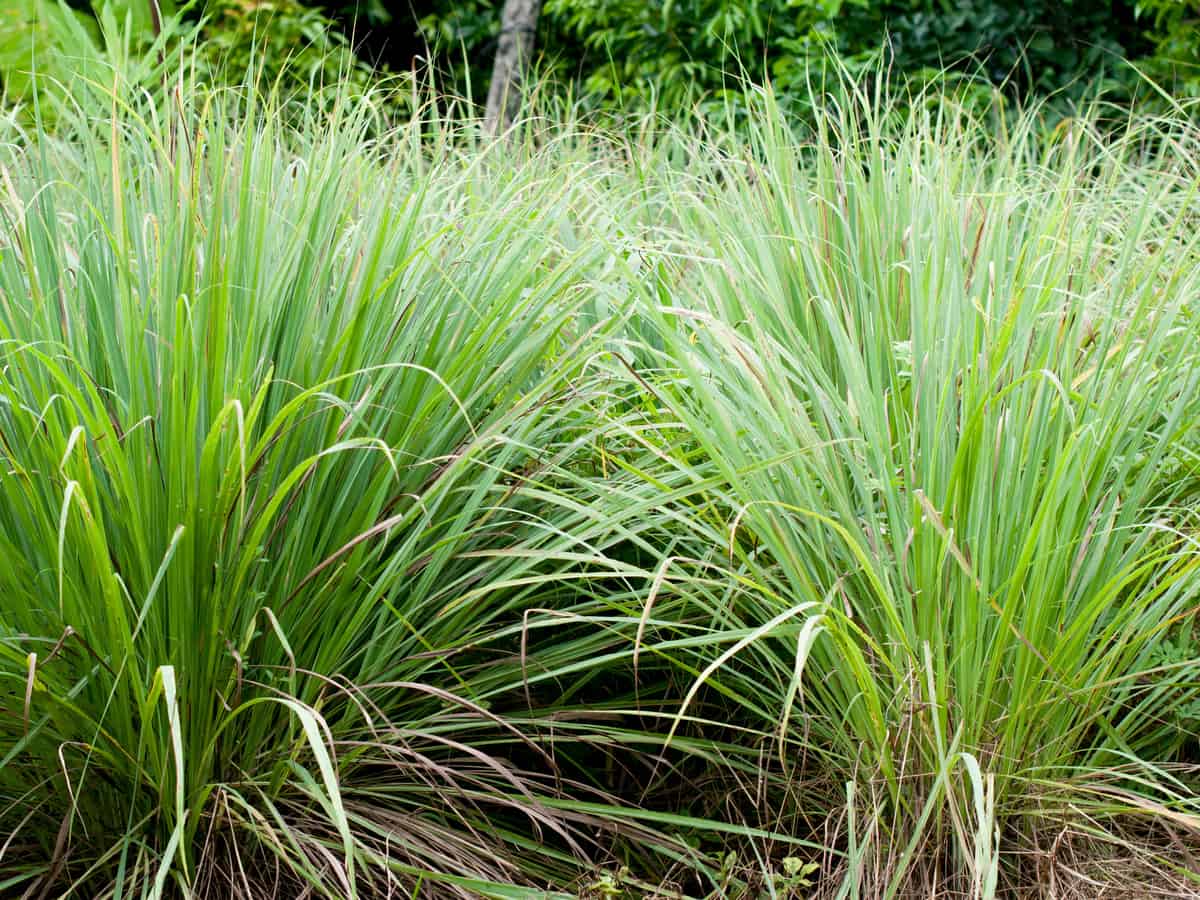
Lemongrass grows in tall, grassy clumps and reaches heights of up to five feet tall. The appearance of this tropical herb is similar to ornamental grasses; so many people use it as such in their garden beds. As an herb, Lemongrass offers a lot of benefits, one of them being the ability to repel cats and other pests with its lemony-citrus fruit scent.
Never plant Lemongrass in clay soil; as it’s a tropical plant, it enjoys moisture but will quickly die if left in soil that allows water to puddle. When planting Lemongrass, select a location that offers full sun, even in hotter climates.
As a tropical plant, Lemongrass requires well-draining soil with steady moisture to ensure the roots won’t dry out. When planting in a pot, find one that is at least 12 inches across and use a high-quality potting soil.
Catnip (Nepeta cataria)

The majority of cats are attracted to catnip, so obviously you are wondering how to repel cats using catnip. Catnip attracts cats to a specific area of your yard, so plant it in an area that you don’t mind them visiting. Catnip is another plant that belongs to the mint family, but its aroma is one that drives cats crazy.
Catnip, even just sprinkling crushed leaves in a sandbox or other parts of your yard, keeps your planters from being used as litter boxes. When planting, make sure it’s in an area that has plenty of room for cats, including stray cats, to rub and roll in without harming anything else.
The low growing perennial will die back in winter but comes back next spring. You can cover plants with chicken wire to help protect the base and roots from loving cats.
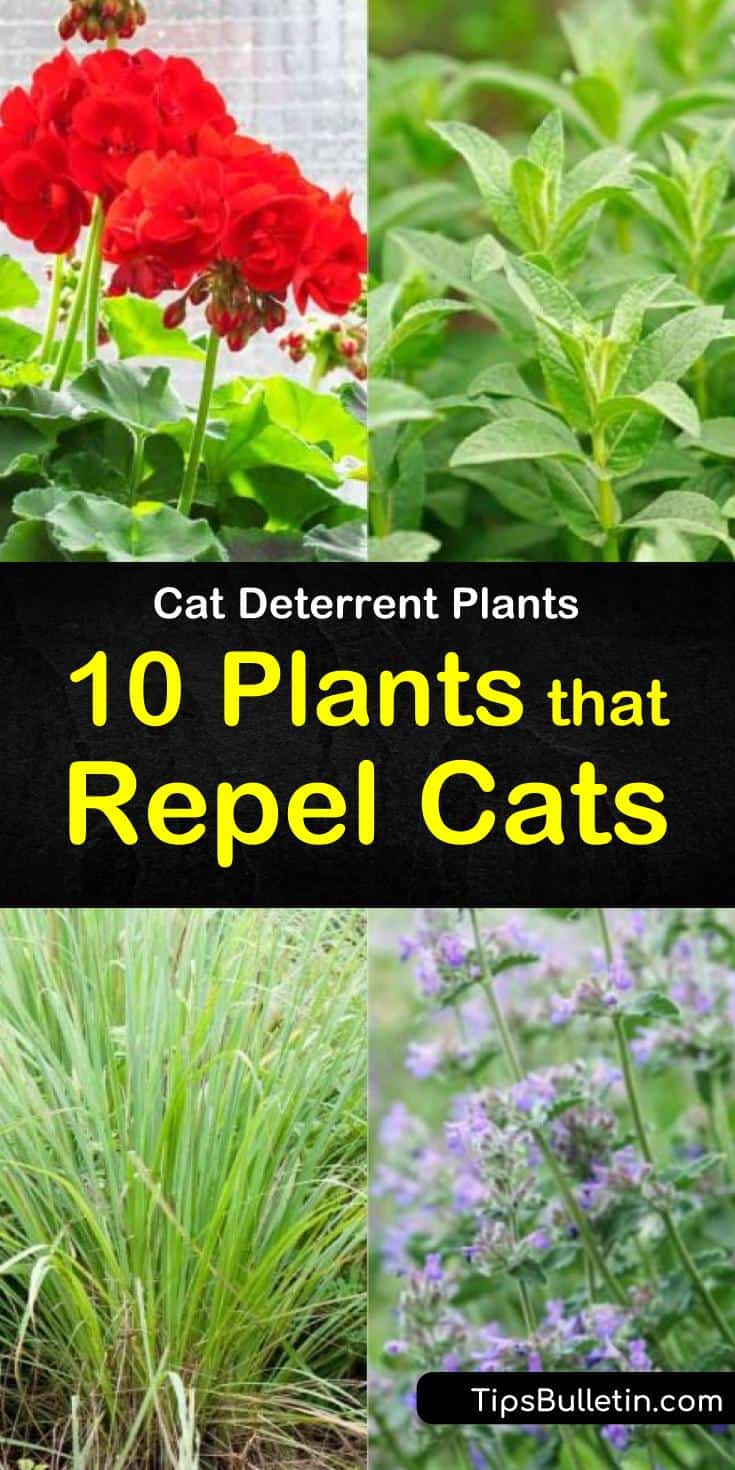
Hopefully, you enjoyed reading about these ten cat repellent plants. If you found any of our plants that keep cats away useful, please share our ideas on plants that repel cats with others on Facebook and Pinterest.